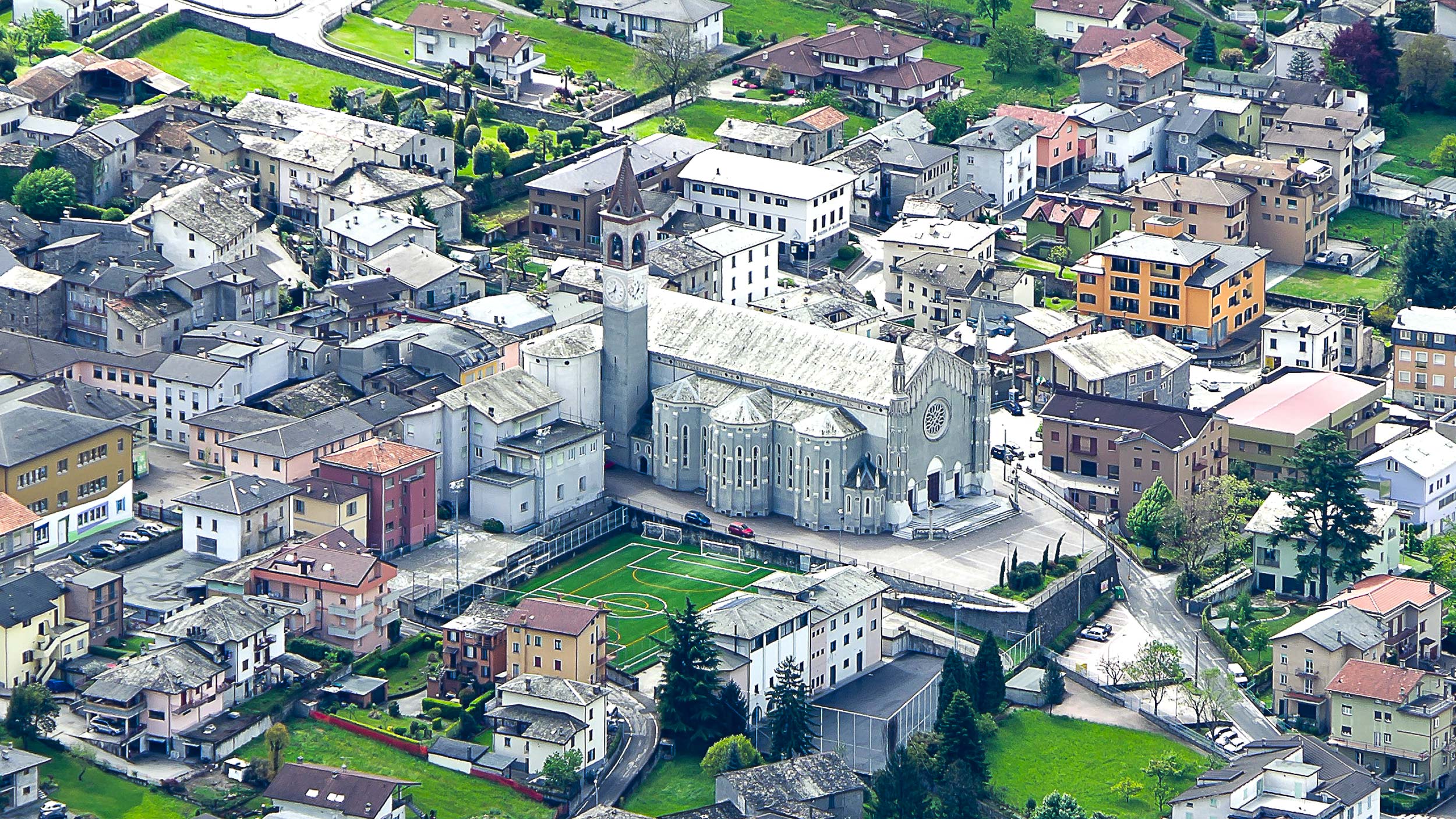Via Gavazzeni, 1, 23018 Talamona SO
The Talamona parish church is the one you were not expecting. It is a grandiose neogothic work built between 1920 and 1927, a full expression of the final phase of Eclecticism, which found greater expression here in Valtellina in private buildings and hydroelectric plants than in religious works.
It stands in place of the old parish church of the Nativity of Mary, glorious in the late 16th century for its ornaments but inadequate to accommodate the numerous faithful. In other places, the problem was resolved by extending existing churches. The community of Talamona, on the other hand, decided to build an entirely new one, keeping only the bell tower and the presbytery, which was converted into the sacristy.
In 1921, design was entrusted to a great Milanese architect and engineer, Spirito Maria Chiappetta (1868-1948). He soon became a priest and was summoned to the Vatican to fulfill key roles in the papacy of his friend Pope Pius XI.
In keeping with his custom, Chiappetta designed every detail of the Talamona church: from the slender buttresses to the single-light, pointed-arch windows, from the pinnacles to the windows and balustrades, turning to Gabriele Passerini of Morbegno for the work in reinforced concrete, which was quite in vogue in those years. The façade has remained unfinished, but the two spires and the rose window give the church a transalpine neogothic look.
Entering, one is impressed by the grandiosity of the space, with gold-ribbed ceiling vaults. Other details emerge more gradually: the marble-chip floor tiles, the neogothic style of the lateral altars, the stained-glass windows, and the frescoes by Piedmont artist Luigi Morgari (1931) in the presbytery.
Evoking the title of the church, the first chapel on the left contains a modern simulacrum of Baby Mary in a luxurious cradle supported by angels.
Not everything was made in the 20th century. Various furnishings were recovered from the earlier church, such as the altar in briar-root in the first chapel on the left, the marble baptismal font (1618) and the pulpit now converted into the ambon (1697), not to mention the prized decorative items in the sacristy.
Furthermore, the middle chapel on the right contains a statue of Mary Immaculate by the Milanese artist Giuseppe Antignati (1733) engaged in dialogue with a modern statue of Our Lady of the Rosary on the altar crafted by the Ferrari brothers of Ponte di Legno (1928).
The church is a veritable painting gallery with works both from the old parish church and from the suppressed Dominican convent of Morbegno. Notable are the four Renaissance paintings with Stories of St. John the Evangelist, believed to be the doors of a lost altarpiece.







